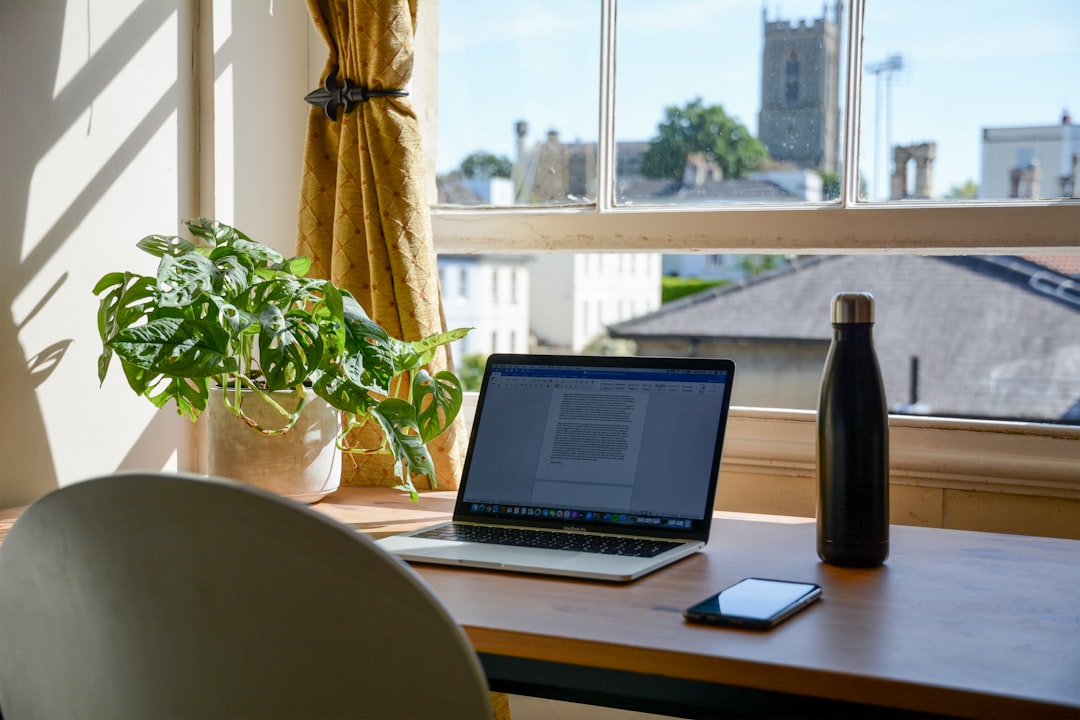Introduction
In the dawn of the 21st century, as technology was taking giant strides, an evolution was quietly brewing in the realm of work. The traditional nine-to-five, office-bound job was slowly but surely losing ground to a new style of work - remote work. The tipping point, however, came with an event that shook the world to its core - the COVID-19 pandemic. As businesses shut their doors and cities were locked down to curb the spread of the virus, the world got a forced introduction to remote work.
The bustling metropolis with its forest of skyscrapers, the frenzied pace of life, the hordes of people scurrying to and fro to their workplaces, only to get trapped in cubicles, were replaced by a more serene, personalized workspace in the safety of one's home. Offices were no longer physical entities confined to a particular geographical location; they were wherever the worker wanted them to be, as long as it adhered to the new mantra of social distancing.

However, as the pandemic stretched on, turning weeks into months and then into years, a new problem began to surface. The initial novelty of remote work gave way to a strange, exhausting phenomenon - burnout. People have been working longer hours, with the boundaries between personal life and professional life becoming increasingly blurred1. The home, once a sanctuary from the pressures of work, has transformed into an all-in-one hub of life's activities. The lack of separation between work and home has caused stress, the constant availability has led to overwork, and the isolation has resulted in loneliness. The once hailed panacea for work-life balance is slowly showing its cracks.
The causes have been manifold. The absence of a structured work environment, the pressure to be always available, the lack of social interaction, and the struggle to maintain a work-life balance in the same physical space have all been contributing to this burnout. There has been no 'switching off' from work mode, no casual water-cooler conversations to break the monotony, and no physical demarcation to signal the end of a workday.
Amidst these challenges, the concept of 'working from near home' has emerged as a promising solution. It has offered a way to reap the benefits of remote work, such as flexibility and less commuting, without the disadvantages that come with working directly from home. It has allowed individuals to separate their professional life from their personal life by providing a dedicated workspace away from home, but within their community.
Working from near home is allowing for the creation of a 'third space', one that is neither fully home nor fully office, and it is offering the best of both worlds. It provides a structured environment for focused work, reducing isolation by enabling social interaction, and establishing clear boundaries between work and home. This model is proving to be the key to avoiding burnout, improving productivity, and fostering a healthier work-life balance, thereby addressing the issues that remote work from home has inadvertently caused. It appears that the future of work may not be confined to the traditional office or the confines of our homes, but rather somewhere in between - near home.
The Focus and Network Advantages
The path that led me to embrace the concept of working from near home has significantly transformed my work routine and lifestyle. My week is punctuated by regular visits to my favorite local haunts, whether it be the bustling coffee shop around the corner or the cozy bar serving the best mocktails in town. On Tuesdays and Thursdays, particularly between the hours of 4 to 6 PM, these establishments become my sanctuary. They offer a conducive ambiance for work, their familiar hum of activity a gentle soundtrack to my thoughts. It's a refreshing change of pace, a welcome escape from the interruptions that inevitably arise when working from home.
This routine is more than just a change in the physical workspace, it's also an avenue for expanding my professional horizons. Nestled amidst the aroma of freshly brewed coffee and the soft clatter of cutlery, I often find myself crossing paths with other professionals from my community. These chance encounters, casual and yet rich with insight, have broadened my professional network, sparked fresh ideas, and on occasion, laid the groundwork for potential collaborations. Beyond the professional sphere, these interactions have also cultivated a sense of community, enhancing my sense of belonging.

One of the remarkable benefits I've experienced in this journey is the substantial boost in productivity. The shift in scenery, from the familiarity of home to a local establishment, injects a sense of renewed vigor and perspective into my work. Surprisingly, the ambient noise of a coffee shop or bar, far from being a distraction, actually spurs a state of focused creativity. Studies have shown that a moderate level of ambient noise, such as that found in a bustling cafe, can enhance performance on creative tasks.2 Being able to distance oneself from home distractions in such an environment can be a boon to finishing your tasks list.
Working from near home, though beneficial, is not without its unique challenges. To maximize productivity and minimize distractions, a well-articulated plan is essential. Before setting out to your chosen location, identify at least three tasks or goals you aim to achieve during your time there. This not only provides direction but also helps maintain focus on your priorities. Digital distractions can often be a hindrance to productivity. Consider leveraging productivity apps like Cold Turkey to keep these distractions at bay. These apps temporarily block access to certain websites or applications, enabling you to avoid the lure of online diversions and maintain a steady work rhythm.
Aside from managing digital distractions, incorporating periodic breaks into your work routine is equally vital for both physical and mental rejuvenation. The work-from-near-home environment offers a unique opportunity to take short breaks that allow for physical movement and mental respite. Grab a notebook and pen during these breaks and allow your thoughts to flow freely. This shift from the digital realm can stimulate a different mode of thinking and foster creativity.
Working from near home, like any work setting, involves striking a balance. It requires harnessing the energy of a public space for productivity while mitigating potential distractions. With a bit of planning and discipline, it can offer a rewarding and productive alternative to the traditional office or entirely remote work.
The Local and Financial Advantages
The concept of 'working from near home' stretches beyond personal benefits and contributes significantly to broader societal advantages. One of the key aspects of this work model is the flexibility it provides. It allows individuals to create a schedule that not only aligns with their professional responsibilities but also accommodates their personal needs. This level of autonomy provides an opportunity to juggle professional tasks, family time, and personal activities more effectively, reducing stress and enhancing overall well-being.
Commuting, a common source of stress and wasted time, is significantly reduced in this model. Instead of spending hours stuck in traffic or crammed in public transport, individuals can utilize their time more productively. For me, this reduction is literal and environmentally friendly. A short bike ride replaces what used to be a long drive, not only saving on gas but also reducing carbon emissions. The mental and physical benefits of this active commute are a bonus, providing a refreshing start to the workday.

The financial implications are noteworthy as well. The savings from reduced transportation costs - gas, parking fees, and vehicle maintenance - are significant. Moreover, these savings extend to work-related expenses such as professional attire and meals. Instead of splurging on a business lunch, a simple cup of coffee or a mocktail at the local establishment suffices. The guilt-free indulgence made possible by the savings on commute costs adds a sweet note to the visit.
Finally, the engagement with local businesses and communities also deepens. Instead of channeling funds into professional buildings or co-working spaces like WeWork or Shift Work, supporting local establishments bolsters the local economy. Every cup of coffee or meal purchased becomes a direct contribution to community growth and sustainability. It's a symbiotic relationship that underscores the holistic benefits of this approach - a comfortable and productive work environment for me, and a boost to the local economy.
Conclusion
In conclusion, the benefits of the 'working from near home' approach are multifaceted, touching both the personal and communal aspects of our lives. It provides a level of flexibility that allows individuals to create schedules suited to their personal needs and responsibilities. By reducing commuting time, it frees up more hours for family time and personal activities, promoting a healthier work-life balance and improved overall well-being. The model also champions environmental sustainability by reducing carbon emissions and transportation costs. And, perhaps the most rewarding aspect, the local engagement deepens, promoting a sense of community and supporting local businesses.
While the shift from traditional office work or even entirely remote work may initially seem daunting, the rewards of this approach, as I've personally experienced, make it worthwhile. I encourage you to explore this work arrangement and find the balance that suits your needs best. It's a matter of finding the right local spot, creating a routine, and embracing the advantages this model offers. By doing so, we not only contribute to our productivity and well-being but also engage more meaningfully with our localities. The 'work from near home' model thus emerges as a transformative approach, fostering a more balanced, sustainable, and community-oriented way of working.
Check this Money.com article summarizing the ideas of longer hours and linking to multiple studies on the matter. Read this one for a more academic understanding on the impact of WFH on information workers.
See Mehta, R., Zhu, R. (Juliet), & Cheema, A. (2012). Is Noise Always Bad? Exploring the Effects of Ambient Noise on Creative Cognition. Journal of Consumer Research, 39(4), 784-799. Retrieved from https://www.jstor.org/stable/10.1086/665048
Laverty, L., Edelstein, E. A., & Brink, R. (2016). The Sound of Creativity: Correlating Brainwave & Psychometric Changes with Workplace Acoustics. Presented at the 2016 ANFA Conference (Salk Institute for Biological).




100% . I never imagined such changes would occur in my lifetime (I’m 56). I cycle to work smiling .